
Frederick III was King of Denmark and Norway from 1648 until his death in 1670. He also governed under the name Frederick II as diocesan administrator of the Prince-Bishopric of Verden, and the Prince-Archbishopric of Bremen (1635–45).

The Royal Danish Navy is the sea-based branch of the Danish Armed Forces force. The RDN is mainly responsible for maritime defence and maintaining the sovereignty of Danish territorial waters. Other tasks include surveillance, search and rescue, icebreaking, oil spill recovery and prevention as well as contributions to international tasks and forces.

Vice-Admiral Peter Jansen Wessel Tordenskiold was a Royal Dano-Norwegian navy officer and nobleman. Born in Trondheim, he travelled to Copenhagen in 1704 and eventually join the Dano-Norwegian navy, rising to the rank of vice-admiral for his actions during the Great Northern War. He won a name for himself through audacity and courage and was ennobled as Peter Tordenskiold by Frederick IV of Denmark in 1716. His greatest exploit came later that year, as he destroyed a supply fleet of the Swedish Navy at the Battle of Dynekilen, ensuring the siege of Fredriksten would end in failure. In 1720, he was killed in a duel. He ranks among the most famous naval captains in Denmark and Norway. He experienced an unusually rapid rise in rank and died when he was only 30 years old.
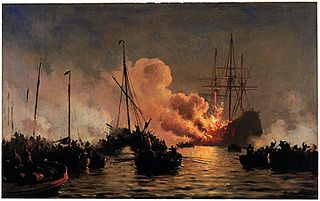
The Battle of Køge Bay (1710) also referred to as the Second Battle of Køge Bay, was an indecisive battle that took place on 4 October 1710, during the Great Northern War, in Køge Bay, just south of Copenhagen. Denmark had 26 ships of the line and 5 frigates with 1808 guns, and Sweden had 21 ships of the line and several frigates with 1512 guns. The Danish ship Dannebroge exploded and of the 550-man crew only 9 survived. The Swedish ships Tre Kronor and Prinsessan Ulrika Eleonora ran aground. Because of the weather the battle could not continue. However, the Swedish fleet managed to sink and capture a Danish convoy of transport ships that were supposed to embark a Russian invasion force in Danzig. The action in Køge Bugt checked those Russian invasion plans of Sweden.

Ulrik Frederik Gyldenløve, Landgrave of Laurvig was Governor-general of Norway from 1664–1699. He was the leading general in Norway during the Scanian War, whose Norwegian leg is conventionally named the Gyldenløve War after him. In Norway he was also the Landgrave of Laurvig.
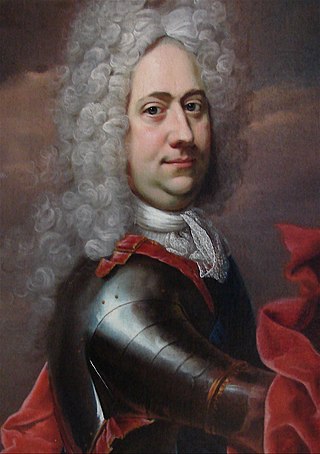
Ulrik Christian Gyldenløve, Count of Samsø was a Danish Admiral in the Royal Danish-Norwegian Navy and Governor of Iceland. He was an acknowledged illegitimate son of King Christian V of Denmark and his officially acknowledged royal mistress Sophie Amalie Moth.

The history of the Danish navy began with the founding of a joint Dano-Norwegian navy on 10 August 1510, when King John appointed his vassal Henrik Krummedige to become "chief captain and head of all our captains, men and servants whom we now have appointed and ordered to be at sea".

Naval Station Holmen is one of several naval stations of the Royal Danish Navy, supplementing the two Danish naval bases in Frederikshavn and Korsør.
Christen Thomesen Sehested was a Danish Admiral.
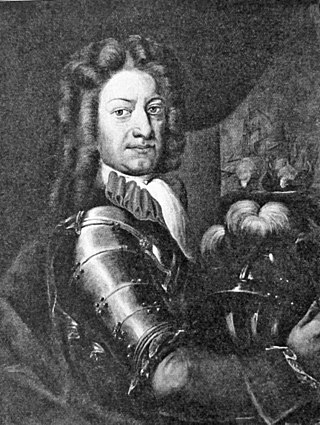
Iver Huitfeldt was a Danish-Norwegian naval officer who was killed in action, when he commanded the ship Dannebroge during the Great Northern War 1700–1721.

Johan Vibe was a Danish military officer and engineer, who was appointed Governor-General of Norway from 10 April 1708 until his death.
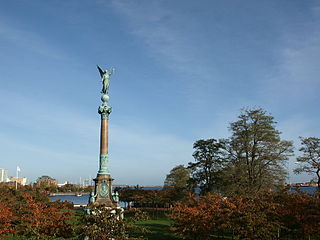
The Ivar Huitfeldt Column is a monument at Langelinie in Copenhagen, Denmark, built to commemorate the death of Admiral Ivar Huitfeldt and his men from HDMS Dannebroge, which exploded and sank in the Battle of Køge Bat during the Great Northern War. The monument was constructed in 1886 to a design by Vilhelm Dahlerup. Ferdinand Edvard Ring was responsible for the statue of the Roman goddess of victory, Victoria, and for the reliefs, while Carl Brummer undertook the monument's architectural design.

HDMS Elephanten was a ship of the line of the Royal Dano-Norwegian Navy that served from 1703 to 1728. There were three other Danish ships-of-the line of the same name, dating from 1684, 1741 and 1773. The ship was sometimes referred to as Nye Elefant to differentiate from others of similar name. For much of her service career, which coincided with the Great Northern War, Elephanten was the flagship of the Danish fleet active in the Baltic Sea.
Henrik Span was a naval officer in the Dutch, Venetian and Danish services. He reached the rank of Admiral in the Royal Danish Navy in 1683 and headed the Royal Danish Naval Dockyard in Copenhagen from 1690. In 1692, he was granted Hørbygaard at Holbæk and raised to the peerage by Christian V of Denmark.
HDMS Elephanten was an 18th-century ship-of-the-line in the Dano-Norwegian navy that was built at Nyholmen in Copenhagen by Laurent Barbé and ornamentation by J.Wiedewelt.
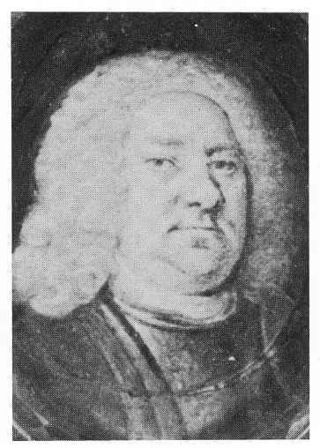
Ole (Olaus) Judichær was a Danish shipbuilder and admiral in the Royal Danish Navy.
HDMS Ørnen (1694) was a frigate in the Royal Danish Navy active during the Great Northern War

Michael Bille (1680–1756) was an officer in the Danish Royal Navy during the Great Northern War. He was commissioned as a junior lieutenant in 1699, advancing steadily to become Vice Admiral when he retired in 1737.

Ulrich Jørgensen Kaas was a member of the old noble family of Mur Kaas, and an officer in the Dano-Norwegian navy. He rose to the rank of rear admiral in the Great Northern War and later to full admiral in 1732. Following a power struggle within the Danish admiralty, he left the naval service for a senior post in Bergen.

HDMS Fridericus Quartus, launched at Royal Danish Naval Dockyards in 1699, was a three-deck, 110-gun ship of the line designed to be the flagship of the Royal Dano-Norwegian Navy. She soon proved difficult to navigate, and unsuited for the shallow Danish waters. She was later used as an East Indiaman, first by the Danish East India Company and then by the Danish Asiatic Company. She was wrecked at Skagen in November 1736, shortly after embarking on her second DAC expedition to Tranquebar. She co-existed with another ship by the same name, a slave ship owned by the Danish West India Company, which wrecked off Costa Rica's coast in 1710.



















